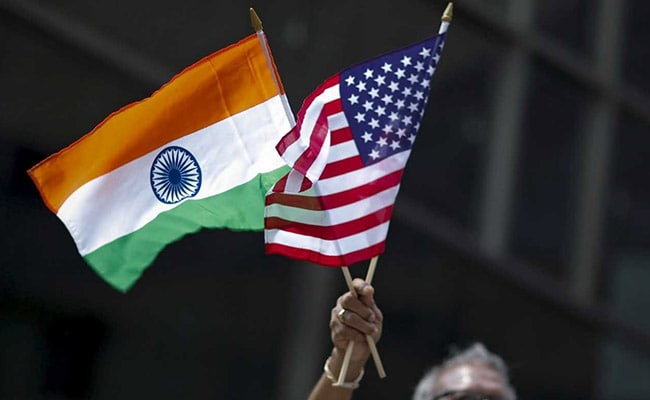
According to UNRWA, more than 2,300 aid trucks entered the Gaza Strip in February
Palestinian territories:
Earlier on Thursday, thousands of Palestinians flocked to aid distribution points, desperate for food amid Gaza’s looming famine, only to be met with deadly chaos, including live fire from Israeli troops.
By mid-afternoon, the Hamas-run health ministry said more than 100 people were reported dead in the horrific incident, which highlighted growing shortages in the war-torn Palestinian territory.
“There were a lot of people but the occupying forces kept shooting at us,” one young man, lying on the dirty, crowded floor of Kamal Adwan Hospital awaiting treatment, told AFP.
He was one of those injured in the chaos. But there are conflicting reports about what exactly happened in the predawn hours.
Ali Awad Ashqir went to buy some flour for his hungry family and waited for two hours when violence broke out.
“At around 4:00 a.m., trucks started arriving. As soon as they arrived, the occupying forces fired artillery shells and guns,” he told AFP.
“I was shot in my left foot and was taken to Al-Shifa Hospital. I was later discharged as the injury was minor.”
Hossam Abu Safiya, director of Kamal Adwan Hospital, said all the wounded were hit by “bullets and shrapnel from the occupying forces.”
Gaza Health Ministry spokesman Ashraf al-Qudra condemned the “massacre” in Gaza City’s Nabulsi roundabout, saying 112 people were killed and 760 injured.
He blamed the Israeli army, and Israeli sources confirmed to AFP that Israeli troops at the scene did open fire because they considered the crowd near the truck a “threat.”
But a spokesman for Israeli Prime Minister Benjamin Netanyahu’s office said many of the dead were crushed to death by trucks.
“Rescue trucks were overwhelmed by people trying to rob them, and their drivers plowed into the crowd, ultimately killing dozens of people,” spokesman Avi Hyman said.
– Gaza Storm Truck –
Israeli Army spokesman Maj. Gen. Daniel Hagari said late Thursday that “thousands of Gazans” had swarmed trucks carrying Egyptian aid and “violently pushed and even trampled other Gazans.”
Hagari said the escorting Israeli tanks fired warning shots and tried to retreat, denying that the army had turned the tanks on civilians.
“We did not fire on the humanitarian convoy – either from the air or on the ground,” he said.
Outside Kamal Adwan Hospital, four women in headscarves clutched the body of a bearded man wrapped in white cloth and cried.
At Shifa Hospital in Gaza City, doctors were “unable to cope” with the large number of casualties “due to weak medical and personnel capabilities,” Kudela said.
After Hamas launched an unprecedented attack on southern Israel on October 7, Israel vowed to eliminate Hamas.
Hamas attacks killed about 1,160 people, mostly civilians, according to an AFP tally of official Israeli figures.
“They are terrorists, not us,” said Umm Hamdan Abu Sultan, a displaced woman waiting for aid near the scene.
“Our children were starving and we went to get a bag of flour to feed our children and they shot at them.”
Israel’s harsh military response to the Oct. 7 attacks has killed at least 30,035 people, mostly women and children, according to the Israeli Health Ministry, which did not specify how many militants were included in the death toll.
The offensive has caused widespread destruction in Gaza and severe shortages of food, water and medicine.
‘The soldiers are approaching the city’
Aid workers have warned for months of the increasingly desperate situation for civilians in Gaza, and on Monday an official at the U.N. humanitarian office’s Office for the Coordination of Humanitarian Affairs said widespread hunger was “almost inevitable.”
The United Nations estimates that 2.2 million people – the vast majority of Gaza’s population – are at risk of famine, particularly in the north, where destruction, fighting and looting have made food delivery nearly impossible.
According to UNRWA, the United Nations agency for Palestinian refugees, more than 2,300 aid trucks entered the Gaza Strip in February, about 50% less than in January.
The average number of trucks entering per day was well below 100, compared with around 500 per day before the war.
It was this scarcity that prompted crowds to swarm trucks at the Naboursey roundabout on Thursday, a witness told AFP.
Aerial footage released by the Israeli military showed a large group of people on foot swarming into a line of moving trucks.
“The truck loaded with aid came too close to some army tanks in the area and thousands of people stampeded the truck,” said the witness, who declined to be named for security reasons.
“Soldiers fired into the crowd because people were too close to the tanks.”
Thursday’s incident sparked a heated exchange at the Human Rights Council in Geneva, where Palestinian Ambassador Ibrahim Mohammed al-Khelahi confronted his Israeli counterpart over the reported casualties.
“Are these human shields? Are these Hamas fighters?” Khleich asked.
At Kamal Adwan Hospital, a Palestinian woman said: “We are under siege. Have pity on us. Ramadan is coming. People should look at us. Have pity on us.”
(This story has not been edited by NDTV staff and is auto-generated from a syndicated feed.)






